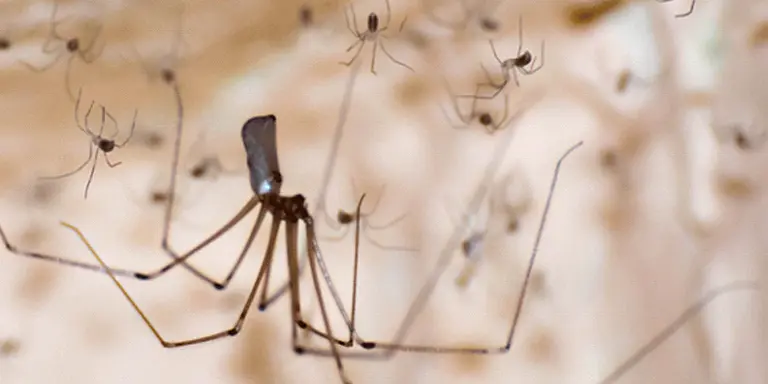Introduction
Spiders are among the most misunderstood and commonly encountered pests in residential and commercial properties. While many species are harmless and even beneficial due to their role in controlling other insects, their presence indoors often causes discomfort, fear, and in some cases, real concern. The sight of webs in corners, unexpected movements on walls, or a spider skittering across the floor can create unease for even the most composed individuals.
What starts as an occasional sighting can quickly evolve into a recurring problem if not addressed appropriately. Although not all spiders pose a danger, some species do carry venom that can harm humans and pets. More importantly, an abundance of spiders may indicate the presence of other pest infestations—since spiders thrive where their food supply (other insects) is abundant.
For this reason, addressing a spider problem goes beyond simply removing individual arachnids. It requires a targeted and strategic approach. In this comprehensive guide, we will explore everything from spider behavior and species identification to prevention methods and professional spider extermination strategies designed to eliminate infestations and prevent future issues.
Understanding Spider Behavior
To properly manage spiders, it’s important to understand their biology and behavior. Spiders are arachnids, not insects. They have eight legs, two main body segments, and often spin webs to trap prey. Most species are nocturnal hunters, preferring to stay hidden during the day and become active at night.
What Attracts Spiders Indoors?
Spiders typically enter buildings in search of food, warmth, and shelter. They are opportunistic predators, feeding on insects such as flies, mosquitoes, ants, and even other spiders. When insect populations increase inside or around a structure, spiders are likely to follow.
Here are some key attractants:
- Presence of other insects
- Cluttered storage areas (attics, garages, basements)
- Dark corners, ceiling voids, and crawlspaces
- Outdoor lighting that attracts flying insects
- Open windows or doors without screens
Unlike pests that target food sources, spiders are less interested in human food and more focused on finding a quiet, safe place to hunt and reproduce.
Common Types of Indoor Spiders
Different spider species exhibit unique behaviors, which means identification plays a crucial role in the success of any spider extermination plan.
1. House Spiders
These are the most frequently encountered indoor spiders. They spin cobwebs in corners, closets, and behind furniture. Though harmless, their webs can be unsightly and may trigger arachnophobia.
2. Wolf Spiders
Wolf spiders do not spin webs. Instead, they actively hunt their prey. Their fast movement and larger size often cause alarm, but they are not aggressive unless provoked.
3. Cellar Spiders
Often mistaken for daddy longlegs, cellar spiders build large, tangled webs in damp areas like basements or crawlspaces. Their presence may indicate excess humidity or poor ventilation.
4. Brown Recluse and Black Widow Spiders
These species are venomous and potentially dangerous. While bites are rare, they can cause serious health complications. Their presence indoors is a serious concern that demands immediate attention.
Knowing which type of spider you are dealing with helps determine the right spider extermination method. For example, eliminating cobwebs may deter house spiders, but venomous species may require chemical treatment or professional removal.
The Hidden Dangers of Spider Infestations
While many spiders are harmless and even beneficial in the garden or greenhouse, their presence indoors isn’t always welcome—and for good reason.
Health Concerns
- Venomous Bites: Bites from spiders like the black widow or brown recluse can lead to severe reactions in humans and pets. Though fatalities are rare, symptoms can include nausea, muscle pain, and ulceration.
- Allergic Reactions: Some individuals may develop allergic reactions to spider bites or even airborne particles from webs and excrement.
- Psychological Stress: Arachnophobia is a real condition. For individuals with a fear of spiders, even minor infestations can cause emotional distress and anxiety.
Property Concerns
- Unclean Appearance: Spider webs and egg sacs in corners and window frames can make a space look neglected or dirty.
- Indicator of Other Pests: Spiders feed on other insects. An abundance of spiders might indicate a larger, unseen pest problem like flies, ants, or cockroaches.
Ignoring the problem or relying solely on spot removal will not solve the underlying issue. Targeted spider extermination is necessary to fully eliminate the problem and restore comfort and cleanliness to your property.
Why DIY Spider Control Often Falls Short
Homeowners often attempt to handle spider infestations using over-the-counter sprays, glue traps, or natural remedies such as vinegar or citrus oils. While some of these solutions may offer temporary relief, they often fail to address the root causes of infestations.
Common Mistakes in DIY Approaches:
- Only removing visible spiders and webs
- Failing to eliminate egg sacs
- Not addressing other insect populations that attract spiders
- Using repellent sprays without targeting hiding spots
- Neglecting outdoor factors contributing to indoor infestations
The complexity of spider behavior and their ability to hide in hard-to-reach areas means that most DIY efforts only scratch the surface. A more comprehensive, integrated approach is required for long-term success.
The Professional Approach to Spider Extermination
Hiring a pest control expert ensures that the infestation is handled with precision, safety, and effectiveness. Unlike general sprays, professional spider extermination targets the entire life cycle of the spider and eliminates the conditions that support their survival indoors.
What Does a Professional Service Include?
- Inspection and Identification
A thorough inspection of the property is conducted to locate nesting sites, entry points, and the types of spiders present. This step is critical to designing a tailored treatment plan.
- Targeted Treatments
Professionals use industry-grade, EPA-approved insecticides that are applied strategically in cracks, crevices, and hidden areas where spiders reside. Dusts, aerosols, and residual sprays are commonly used.
- Web and Egg Sac Removal
Removing webs and egg sacs is essential to prevent future generations from hatching and re-infesting the space.
- Exclusion Techniques
Cracks, gaps, and holes that serve as spider entry points are sealed to reduce reinfestation risks.
- Environmental Recommendations
Clients are advised on reducing clutter, improving lighting, and maintaining clean environments that are less attractive to spiders and their prey.
Professional spider extermination not only removes existing spiders but also creates a hostile environment that prevents their return.
Long-Term Prevention Strategies
Whether you’ve just dealt with an infestation or want to avoid one altogether, prevention plays a vital role in keeping your property spider-free.
Tips for Reducing Spider Activity:
- Declutter: Spiders love undisturbed areas. Keep basements, attics, and garages clean and organized.
- Vacuum Regularly: Vacuum webs, corners, and floors to remove eggs and kill young spiders.
- Seal Entry Points: Use caulk to seal gaps around windows, doors, vents, and utility lines.
- Eliminate Food Sources: Reduce other insect populations by improving sanitation, fixing leaks, and storing food securely.
- Control Lighting: Outdoor lights attract insects, which in turn attract spiders. Use yellow bug lights or motion sensors.
- Trim Landscaping: Keep shrubs and trees trimmed back from the building to reduce spider bridges into your home or office.
By maintaining cleanliness and performing routine checks, you can drastically reduce the likelihood of spiders establishing themselves indoors.
The Value of Scheduled Pest Management
Like many pest problems, spider control isn’t always a one-time fix. Some buildings—particularly those in wooded areas or with high insect activity—require ongoing monitoring and seasonal treatments.
A pest control company can offer:
- Biannual or quarterly inspections
- Scheduled treatments based on seasons and species
- Proactive exclusion services
- Education for residents or staff
These services are especially beneficial for commercial properties, rental units, and high-risk buildings where spider activity is more likely due to environmental factors.
Conclusion
Spiders are complex creatures that serve an important role in the ecosystem, but when they move indoors, they quickly become unwelcome guests. Whether you’re dealing with harmless web-builders or potentially dangerous species, the key to managing the problem lies in understanding spider behavior, removing their food sources, and implementing targeted control methods.
While DIY treatments can offer surface-level results, they rarely reach the root of the problem. For true peace of mind and effective long-term results, professional spider extermination is the most reliable solution. It ensures not only that existing spiders are eliminated, but also that your environment becomes less hospitable to future infestations.
In a world where cleanliness, health, and comfort are more important than ever, ignoring spiders in your space is not an option. Be proactive, stay informed, and take decisive action when needed to protect your home or business from these silent invaders.



































